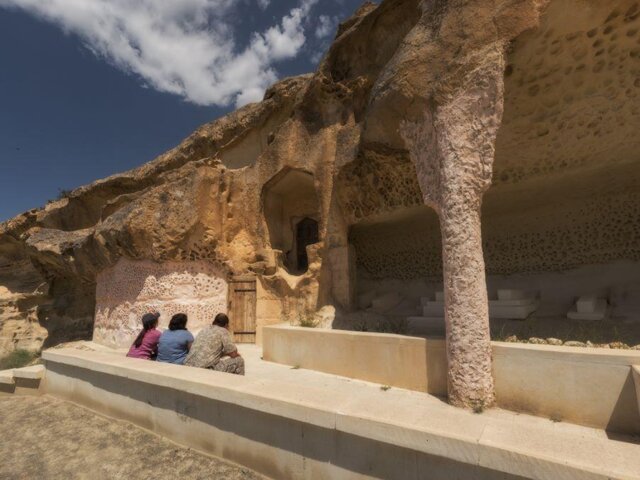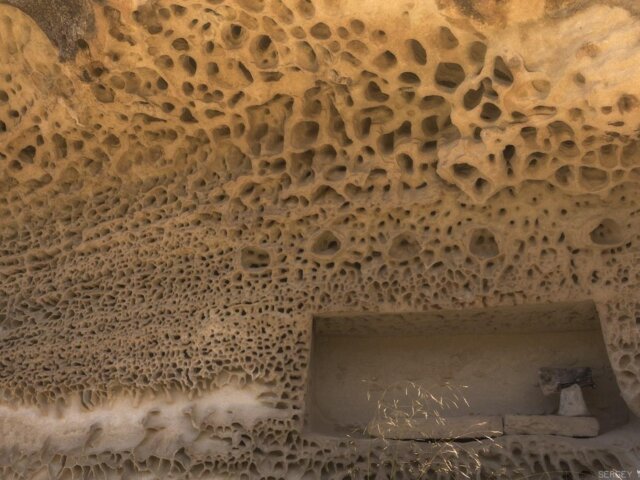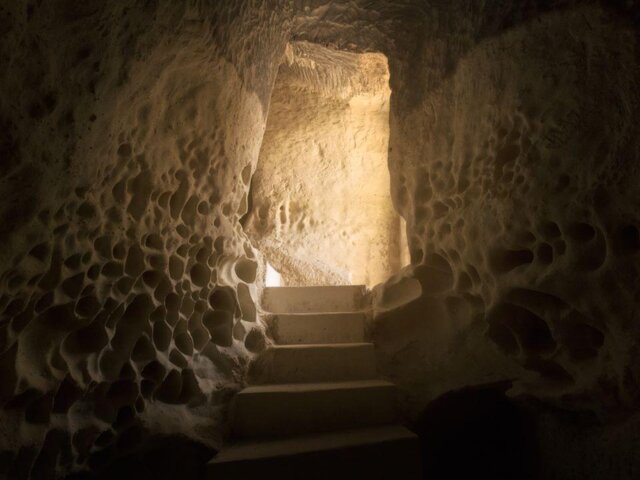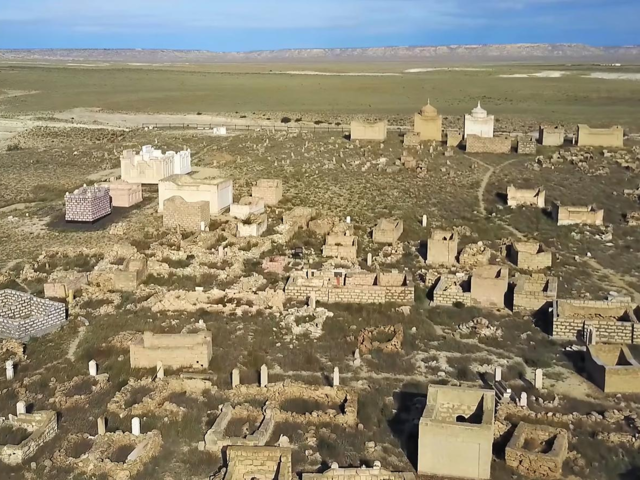Shakpak Ata Cave Mosque
Shakpak Ata Cave Mosque dates back to the 10-14th century, making it the most ancient monument of Islamic architecture in Western Kazakhstan. This is the final resting place of Shakpak Ata, a great warrior, healer, and religious preacher. He remains to be a semi-legendary figure as there is no reliable information about his real name or biography.
Shakpak Ata – a semi-legendary Sufi
According to one of the legends, Shakpak Ata was a warrior who got his nickname because during battles sparks flew off his weapon as if it was made of flint (“shakpak tas” is Kazakh for a flint stone). Others claim that Shakpak Ata got his nickname because of the flint stone deposit located near his mosque.
Some researchers say that Shakpak Ata’s real name is Shahmardan, which means “king of snakes” or “king of the underworld.” By the way, snake worshipping is still relevant in Mangystau. It is believed that if a person spends a night in the Beket Ata Mosque and sees a snake in his dream, it means that the spirit of Beket Ata has come to this person in the guise of a snake.
It is also said that Shakpak Ata gave asylum to sick people in his cave mosque in order to heal them. People still believe that a night spent in this mosque will cure any disease.
Inside the mosque
The mosque is a masterpiece carved inside a solid chalk rock. Another peculiarity that catches your eye inside the mosque is its unusual cruciform plan, very atypical of Islamic architecture. It confirms the theory that ancient tribes carved this cave inside the rocks long before the arrival of the Sufis, around the 9th century. According to local historians, traces of the people of the Stone and Bronze Ages have been found in the mosque. During the spread of Islam, these caves were inhabited by hermits. Also, the cave has traces of other religions: Zoroastrianism, Hinduism, Buddhism, and early Christianity.
The mosque’s four chambers are adorned with inscriptions and images of horses, riders, bulls, human palms, and floral patterns. The image of a human palm is considered a Sufi amulet that protects a place from unclean forces. This image also seems to be universal as it can be seen in caves and archaeological sites worldwide. On the mosque’s wall, one can also see a poem that speaks of the frailty of the world and the transience of human life.
At the mosque’s central hall, stand massive columns, which support the high arch with a round opening in the middle. A stream of light comes from it, illuminating the hall. A spiral staircase leads up to the platform on top of the rock overlooking the cemetery. People have been buried in and around the mosque for thousands of years. You can also see the togyzkumalak board carved on the ground (togyzkumalak is a Kazakh national two-player board game).

Tips for visiting the mosque
There is no fee to enter the mosque. It is open from 9:00 am until sunset. Silence must be observed inside, especially during prayers. Visitors are asked to cover their shoulders and knees and not to wear tight-fitting clothes.
How to get there?
The Shakpak Ata Cave Mosque is located in the northeastern part of the Tupkaragan Peninsula, 45 km (28 mi) northwest of the village of Tauchik. Public transport is not available, so you can get there either by an off-road car or with a guided tour.
If Aktau is the starting point of your trip, take the highway that leads to the airport. At the junction, don’t turn right towards the airport but drive straight. On your way, there will be the villages of Akshukur and Sayyn. After about 46 km (28.5 mi), turn right. Then drive another 34.5 km (21.5 mi) and turn left at the KazMunayGas gas station. After 26.5 km (16.5 mi), you’ll see the village of Tauchik, turn right and drive straight. The distance from Aktau to the mosque is 127 km (79 mi).
Other tourist attractions near the Shakpak Ata Cave Mosque:
• Caspian Sea
• Kapamsay Canyon
• Zhygylgan Hollow
• Sultan Epe Mosque
• Kenty Baba Necropolis
• Tamshaly Canyon
• Fort Shevchenko




